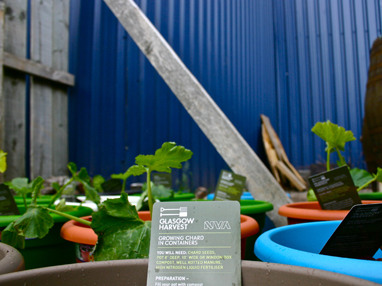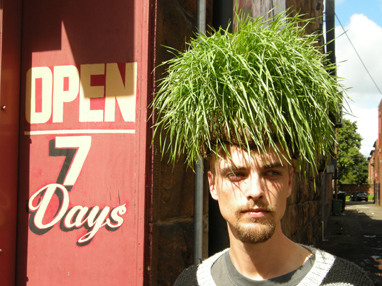
Credit: NVA
Central Station talk to Angus Farquhar, the man behind NVA, the politically driven public arts organisation who are hosting this weekend’s Glasgow Harvest event which celebrates urban growing.
How did NVA become involved in Glasgow Harvest?
The idea behind the Glasgow Harvest was simply that although Glasgow has a large community growing their own food it often takes place in the secret world of allotments, or in back gardens or balconies and I thought it would be good to bring all that activity out into the open to expand people’s sense of being part of something larger than themselves.
How does the project fit in with NVA’s broader philosophy?
It was a very conscious decision to work with the politics of food production and we got involved with Rolf Roscher (who runs an innovative landscape architecture practice ERZ), in delivering SAGE – Sow and Grow Everywhere, a region wide strategy to encourage the productive re-use and transformation of private and public land to grow food. The Harvest itself, has no audience, you participate by bringing food you have grown within a recipe or a pot of jam, so in this sense everyone has a productive role to play, with the only consumption being the food itself! We have made more and more works which are completed by the creative or physical actions of the public and horticulture is another way to extend and make visible a really vital and necessary part of urban living.

Credit: NVA
NVA takes a collective approach to its projects – tell us a bit more about the other groups you’re working with for Glasgow Harvest.
It’s a great eclectic mix, 20 schools growing tatties in rubble bags to make the best chips they can, (there was a horrific stat a few years ago that in one London primary school less than half a class knew that chips came from potatoes…)
85A have created their wonderfully surreal punk herb caps as an esoteric solution to lack of growing space in the city environment.
Acreative containers competition relies on the imagination of anyone who brings an unusual growing receptacle….all in all I think a village fete on acid, probably sums up our approach!
Central Station also recently did a project for Glasgow Harvest (called ‘twEATs’) – how did this partnership come about?
We were really excited by the way social media tools were used to extend the understanding and ownership of the White Bike Plan that we created for Glasgow International. We set another challenge to CenSta to come up with a lively way of allowing people to share an aspect of food growing or consumption and ‘twEATS’ was born, the booklet of donated recipes and graphic representations that we will give away on the day looks pretty sharp.
What do you think is the most interesting aspect of the use of social media in a creative project such as Glasgow Harvest?
It allows a group of people for whom those tools are a part of their everyday communication systems to explore a personal act (growing or cooking) in a collective context.
What aspect of the Glasgow Harvest project are you most excited about?
The hair clippings from the Herbaceous Barbershop being swept into allotment soup and tasting delicious…
Glasgow Harvest took place on 28 August 2010. Find out how it all went here.
/////
To find out what Tasty twEATS & Harvest 2010, click here.














Comments